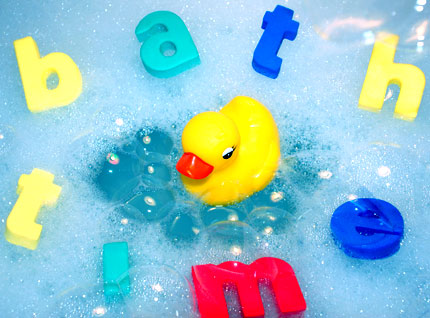Blog
How to Foster Early Language Development in the Home
Early language and communication skills are essential to achieving developmental milestones and later academic success. Language skills are subdivided into two primary category, which include how a child understands language (i.e. receptive language) and how a child expresses oneself (i.e. expressive language). Expressive language includes more than just verbal communication, such as body language, facial expressions, and gestures. Studies have shown that children who develop stronger language and communication skills in their early years are more prepared to succeed upon entrance into school. Additionally, these children encounter fewer obstacles when learning how to read and write.
Parents always ask me what they can do at home to help foster their child’s speech and language skills. Finding additional time in the day to target speech and language can be difficult, especially for the working parents. However, promoting language development is as easy as adding these five daily routines into your schedule!
- Mealtime- This is your opportunity to label the foods you are serving and describe them in depth regarding the colors, the textures/consistences, the tastes, and the temperature. This aids in expanding your child’s concrete and abstract vocabulary. Furthermore, this can also serve to decrease frustration with picky eaters by providing them with the tools to explain why they do not like certain foods, tastes, textures, etc.

- A fun activity is to provide your child with a variety of snacks and two paper plates labeled “Sweet” and “Salty.” Have the child taste each food and then sort the foods appropriately onto their corresponding plate.
- Getting Dressed- Here is your chance to discuss the weather and how we dress differently based on how it is outside. Take time to label/discuss weather attributes (i.e. cold, warm, cloudy, sunny, rainy, snowy, etc.) and the corresponding clothing that is most appropriate (i.e. sweater, pants, t-shirt, shorts, bathing suit, rain coat, coat, boots, etc.)
- An easy activity to try is to provide your child with “absurdities” or silly statements that they can correct. For example, “In the winter, I wear a bathing suit.” They love playing the teacher role in any situation.
- Reading – Explore the vivid illustrations, characters, and settings in all of the books that you are reading. Follow along with your finger to aid in recognition of sight words. Read the same book over and over again too!

- An easy activity before bedtime is story retell. After you read a story to your child, allow him/her the opportunity to tell the story how they want. This helps promote narrative development, creativity, and sequencing of events.
- Backyard Play – This is a great time to narrate the child’s actions and play routines for all outside games (i.e. roll the boll, swing on the swing, ride in the wagon, drive the car, blow the bubbles, etc.).
- While playing outside, do not fall into the trap of constantly quizzing your child (e.g. “What is this?”, “What color is this?”, “Where is this?”, etc.). Studies show that auditory bombardment of set phrases describing a child’s actions is an effective way to promote language development. The child gradually corresponds the actions with the words used to describe it.
- Bath time – This is the opportunity to label body parts from head to toes, as well as their function (e.g. eyes are for seeing, ears are for listening, legs are for walking, etc.).

- Find a toy, such as a barbie doll or action figure, that is water safe and bring it into the tub. Model body part identification on the doll and reciprocate the questions for your child. For example, “Here are Barbie’s eyes. She uses them to see. Where are your eyes?”
Jessica Eberhardt M.S. CF-SLP, TSSLD




